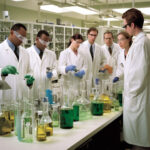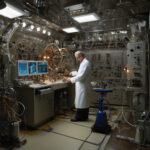Student-built satellite set to study rare atmospheric phenomenon in space
A team of University of Calgary students is preparing to send the city’s first student-built satellite into space. This innovative project aims to study a rare atmospheric phenomenon known as transient luminous events (TLEs) that occur high above thunderstorms.
The satellite, named AuroraXplorer, is equipped with state-of-the-art technology that will allow it to capture high-resolution images and data of TLEs. These events, which include sprites, elves, and blue jets, are still not fully understood by scientists due to their elusive nature and brief duration. By studying TLEs, researchers hope to gain valuable insights into the Earth’s upper atmosphere and its interactions with space weather.
What sets the AuroraXplorer project apart is the fact that it is entirely student-led. From designing and building the satellite to planning the mission and analyzing the data, the University of Calgary students are involved in every step of the process. This hands-on experience not only provides valuable skills and knowledge but also showcases the potential of the next generation of scientists and engineers.
The journey of building the AuroraXplorer has been filled with challenges and obstacles, but the students have shown remarkable dedication and perseverance. They have spent countless hours in the lab, testing and refining the satellite to ensure its success in space. The project has also received support from various industry partners and sponsors who believe in the capabilities of these young innovators.
Once launched, the AuroraXplorer will orbit the Earth at an altitude of 500 kilometers, passing over regions prone to intense thunderstorm activity. The satellite will use its onboard instruments to observe and record TLEs, providing researchers with valuable data that can help advance our understanding of these mysterious phenomena.
In addition to its scientific objectives, the AuroraXplorer project also aims to inspire and educate the broader community about space exploration and research. The students have been actively involved in outreach programs, visiting schools and community events to share their passion for science and technology. By engaging with the public, they hope to spark interest in space science and encourage more young people to pursue careers in STEM fields.
As the launch date for the AuroraXplorer draws near, excitement and anticipation are running high among the University of Calgary students. They are eager to see their hard work and dedication pay off as the satellite begins its mission to study TLEs in space. This groundbreaking project not only represents a significant milestone for the university but also highlights the potential of student-led initiatives in the field of space exploration.
In conclusion, the student-built AuroraXplorer satellite is poised to make a valuable contribution to the study of rare atmospheric phenomena in space. With its advanced technology and dedicated team of students, this project exemplifies the power of hands-on learning and innovation in pushing the boundaries of scientific research. As we look forward to the launch of the AuroraXplorer, we can’t help but be inspired by the potential of young minds to make a meaningful impact in the world of space exploration.
UniversityofCalgary, AuroraXplorer, StudentInnovation, SpaceResearch, STEMEducation












